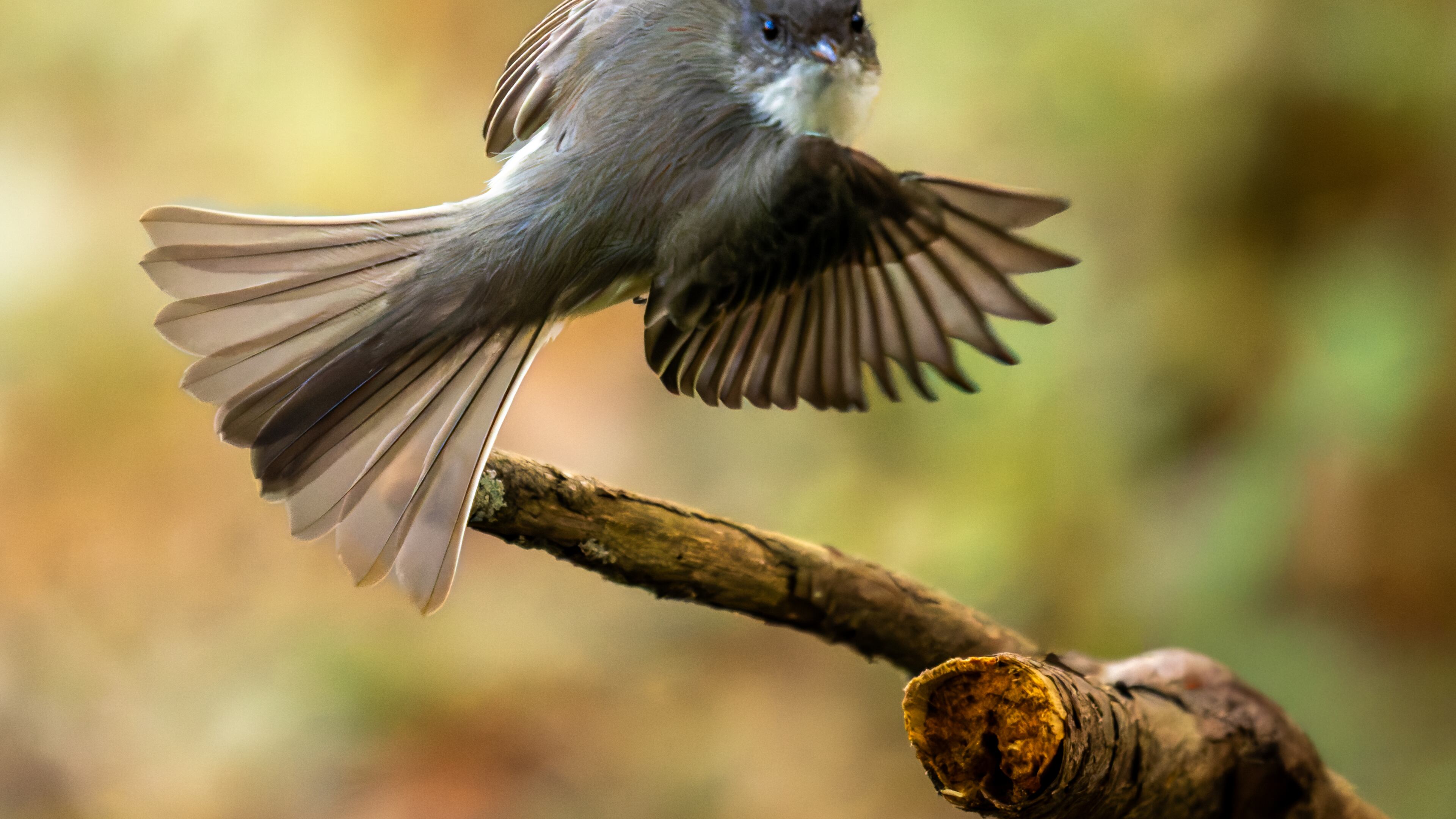A songbird gets too close for comfort to some birders

A note from a friend said that she and her friend were birding at the Clyde Shepherd Nature Preserve in Decatur last weekend when they saw more of a small songbird than they liked. It was an eastern phoebe, a 7-inch-long, brown-and-white bird common in yards and neighborhoods in Georgia.
Eastern phoebes have a reputation for having little fear of humans, but sometimes that can be a problem.
My friend said that she and her companion were standing on an observation deck when the little bird landed on a railing and then on her shoulder. It then flew into her friend’s face and pecked at an eye — causing a slight injury to the cornea. (She is improving as of earlier this week.)
“Trying to wave and shoo off (the phoebe) did very little,” my friend said. “A father and son we met up with later said they had the same experience.”
Actually, close encounters between humans and eastern phoebes are not uncommon. I hear a few stories each year about phoebes landing on people’s heads, shoulders, and outstretched arms and sometimes fluttering in their faces and even pecking at their eyes.
Known for its vigorous tail-pumping and raspy “fee-bee” call, the eastern phoebe, a type of flycatcher, breeds mostly in North Georgia in summer and occurs throughout the state in winter. It is popular with birders and is common in yards and neighborhoods, often building its cup-shaped mud nest in spring on man-made structures, including porches of homes.
But what causes phoebes to behave so bizarrely toward humans? Ornithologists have no clear answers, but some say the birds may simply be curious. One theory is that a phoebe may perch on a gardener’s head to snatch insects that the gardener stirs up.
Another theory is that in the fall, phoebes may harass humans whom they perceive as intruders in their winter feeding territories. In regards to eye-pecking, a theory says the bird may mistake a blinking human eye and eyelashes for a fluttering insect.
IN THE SKY: From David Dundee, retired Tellus Science Museum astronomer: The Leonid meteor shower will peak at about 20 meteors per hour on Monday night — in the northeast sky after dark. The moon will be new on Thursday. Mercury, Venus and Mars are not easily seen right now. Jupiter rises in the east just after dark. Saturn is high in the south just after dark.
Charles Seabrook can be reached at charles.seabrook@yahoo.com.

